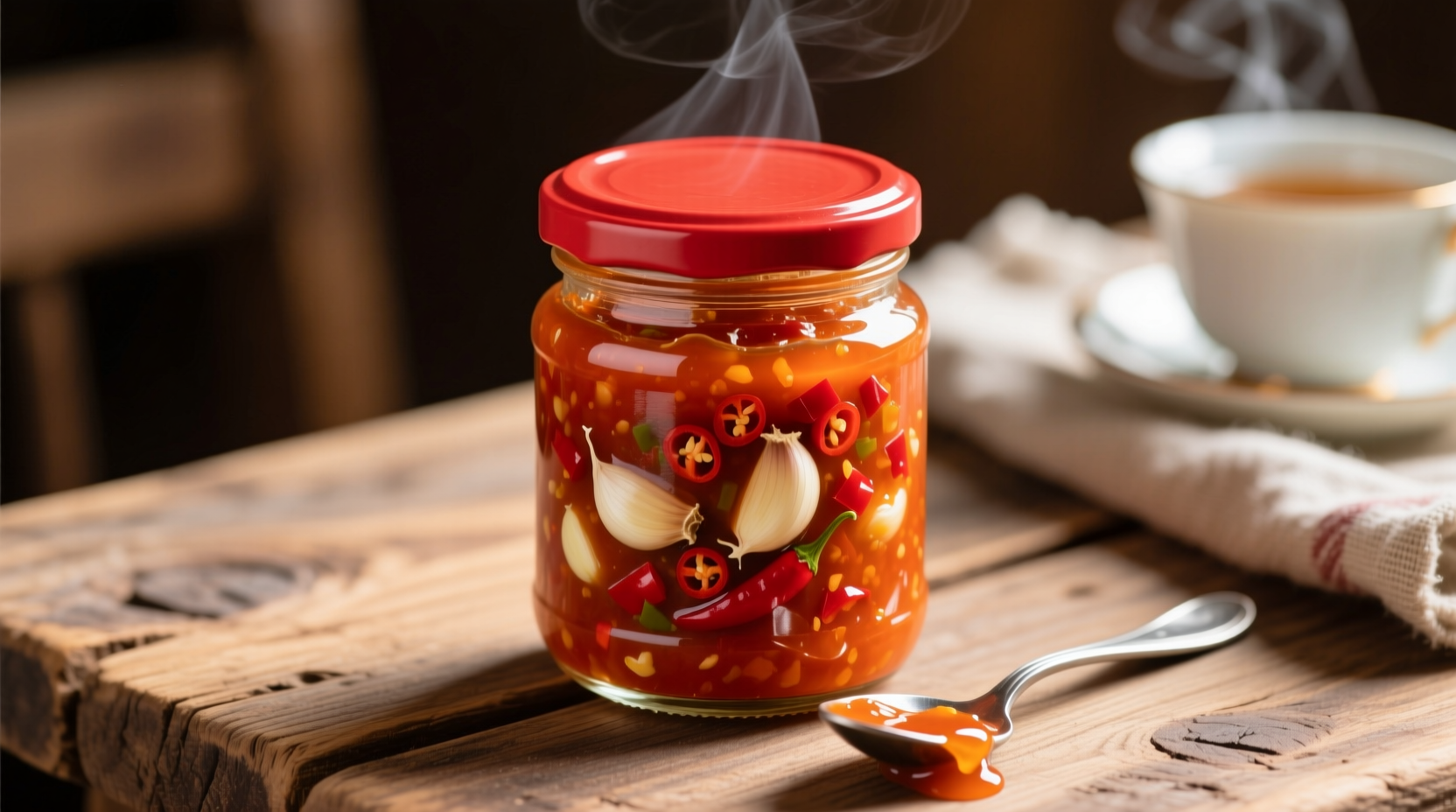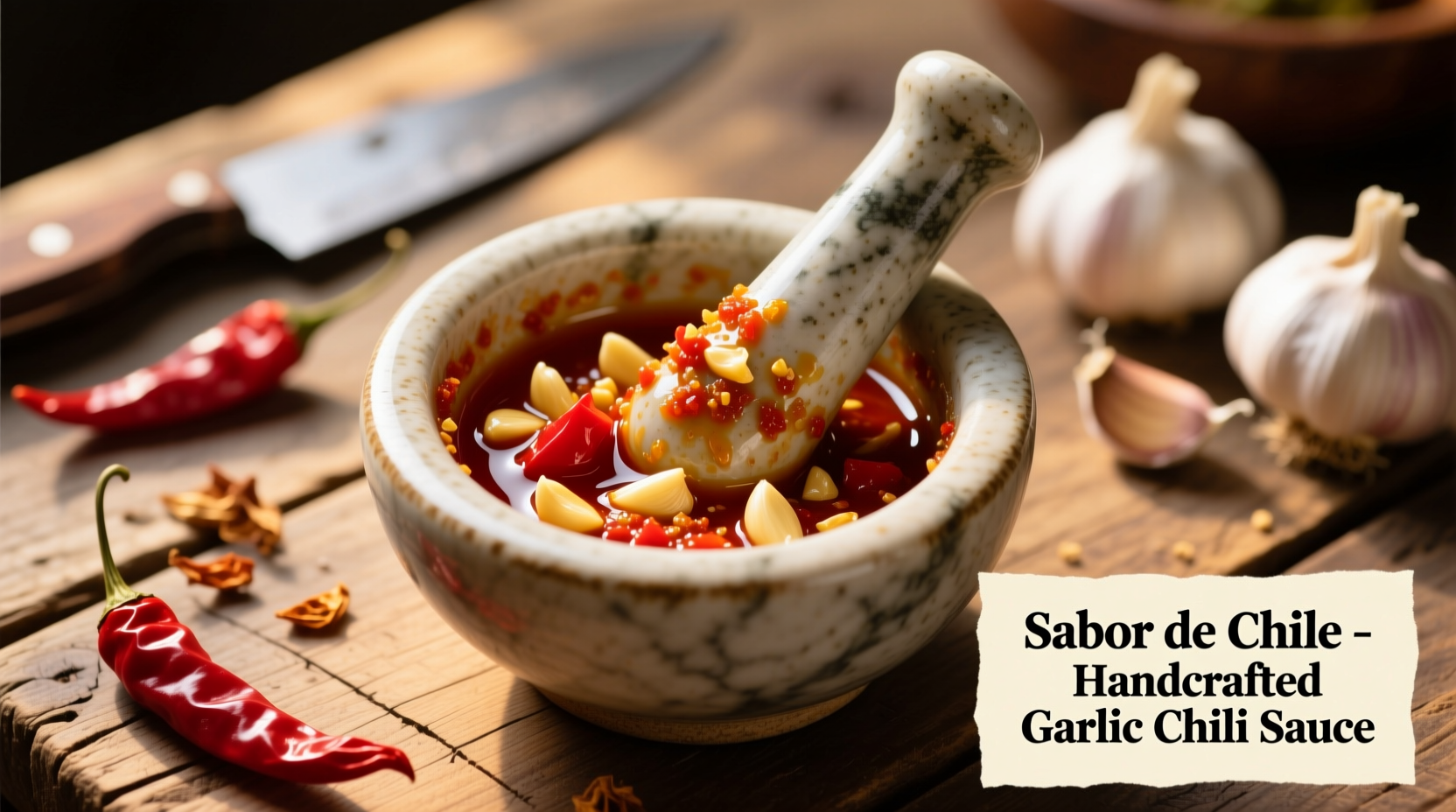What Makes Chile Garlic Sauce Special
Chile garlic sauce stands out for its perfect harmony of heat and flavor complexity. Unlike single-note hot sauces, it delivers layered taste through the natural sweetness of roasted garlic and the varying heat levels of different chilies. The vinegar component provides crucial acidity that balances the richness while helping preserve the sauce.
Professional chefs value this sauce for its "triple threat" functionality - it seasons, marinates, and finishes dishes. When properly made, chile garlic sauce shouldn't overwhelm but rather enhance the natural flavors of your ingredients. The ideal ratio balances one part garlic to two parts chilies by volume, with vinegar comprising about 25% of the liquid components.
Historical Journey of Chile Garlic Sauce
Chile garlic sauce has evolved through centuries of culinary exchange. Originally developed in Southeast Asia where both ingredients grew abundantly, the sauce spread along ancient spice routes. Historical records from Chinese merchant ships dating to the 15th century mention "lajiao suan" (chili garlic) mixtures used as both food preservative and medicine.
| Historical Period | Key Developments | Regional Variations |
|---|---|---|
| 1400-1600 | Chilies introduced to Asia from Americas via Spanish traders | Early Chinese versions used fermented black beans |
| 1700-1850 | Spread through Southeast Asia via trade routes | Thai versions incorporated shrimp paste |
| 1900-1950 | Commercial production begins in Asia | Vietnamese fish sauce variations emerge |
| 1980-Present | Global popularity surge in Western markets | California-style versions with roasted garlic |
Creating Authentic Chile Garlic Sauce at Home
Making chile garlic sauce requires just four essential ingredients but precise technique. Start with fresh red jalapeños or serranos for authentic heat - avoid green chilies which create a different flavor profile. The garlic must be roasted, not raw, to develop sweetness that balances the heat.
Step-by-Step Preparation
- Roast 8-10 ounces of red chilies under broiler until blistered (5-7 minutes)
- Peel and deseed chilies, reserving some seeds for extra heat
- Roast 6-8 garlic cloves until golden (15-20 minutes at 375°F)
- Combine chilies, garlic, ¼ cup rice vinegar, and 1½ teaspoons salt in food processor
- Pulse until smooth, adding water only if necessary for consistency
- Store in sterilized glass jar with ¼ inch vinegar layer on top

Practical Applications in Your Kitchen
Understanding when and how to use chile garlic sauce separates novice cooks from professionals. This sauce works differently than sriracha or chili oil - it's designed to integrate with dishes rather than sit on top.
Best Uses by Cooking Method
- Stir-frying: Add 1-2 teaspoons during the "velveting" stage before proteins
- Marinades: Combine with soy sauce and sesame oil (1:2:1 ratio) for meats
- Dipping sauces: Mix with equal parts honey and lime juice for spring rolls
- Roasted vegetables: Toss with 1 teaspoon per pound before roasting
- Grain bowls: Swirl into rice or quinoa just before serving
Storage Guidelines and Shelf Life
Proper storage determines both safety and flavor preservation. Homemade chile garlic sauce maintains peak quality for 3-4 weeks refrigerated in airtight containers. The vinegar content creates an acidic environment that prevents bacterial growth, but oxidation will gradually degrade flavor.
Commercial varieties typically contain preservatives that extend shelf life to 6-12 months unopened. Once opened, refrigerate and use within 2 months. Always check for these spoilage indicators:
- Change in color from vibrant red to dull brown
- Separation that doesn't reincorporate when shaken
- Foaming or bubbling when jar is opened
- Sour or alcoholic smell (beyond normal vinegar tang)
Regional Variations Worth Trying
While the basic formula remains consistent, regional adaptations create distinctive flavor profiles. Thai versions often include shrimp paste for umami depth, while Mexican adaptations might incorporate tomatillo for brightness. The Chinese Sichuan variation adds a touch of fermented black beans for complexity.
For home experimentation, try these authentic variations:
- Sichuan style: Add 1 teaspoon fermented black beans and ½ teaspoon Sichuan peppercorns
- Thai style: Incorporate 1 tablespoon fish sauce and 1 teaspoon palm sugar
- California fusion: Use roasted red bell peppers with chilies for milder heat
- Mexican adaptation: Blend with charred tomatillos and cilantro
Avoiding Common Mistakes
Many home cooks make critical errors that compromise chile garlic sauce quality. The most frequent issue is using raw garlic, which creates an unpleasant sharpness that overwhelms the chilies. Another common mistake is improper deseeding - removing all seeds eliminates nuanced heat progression.
Professional chefs emphasize these often-overlooked details:
- Always roast garlic until golden, not just softened
- Reserve some chili seeds for controlled heat adjustment
- Let sauce rest 24 hours before use for flavor integration
- Use rice vinegar for neutral acidity that won't overpower
- Store with vinegar layer on top to prevent oxidation
When Chile Garlic Sauce Isn't the Right Choice
Understanding context boundaries prevents culinary disasters. Chile garlic sauce works poorly in delicate seafood preparations where its strong flavor would dominate. It's also incompatible with sweet dessert applications or in dishes requiring clear visual presentation.
Consider these limitations before reaching for your chile garlic sauce:
- Avoid in light-colored sauces where red color would be undesirable
- Don't use in dishes already containing strong fermented elements
- Not suitable for very young children due to intense heat profile
- Limit use in low-sodium diets without modification











 浙公网安备
33010002000092号
浙公网安备
33010002000092号 浙B2-20120091-4
浙B2-20120091-4